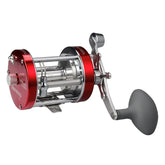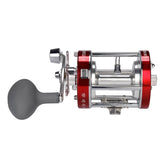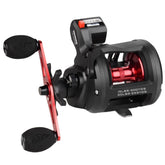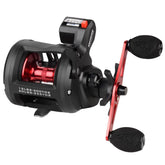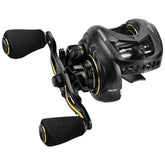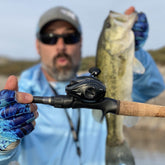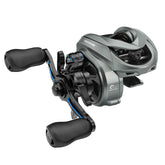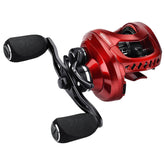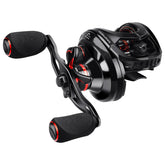-
![KastKing Rover Round Baitcasting Reel]()
![KastKing Rover Round Baitcasting Reel]() KastKingRover Round Baitcasting ReelKastKing Rover conventional round baitcaster reels offer all of the necessary tools for trophy hunters to go after the big ones. Whether you are after giant catfish, salmon, sturgeon, walleye or fishing for large saltwater species, the KastKing Rover is the perfect weapon to...
KastKingRover Round Baitcasting ReelKastKing Rover conventional round baitcaster reels offer all of the necessary tools for trophy hunters to go after the big ones. Whether you are after giant catfish, salmon, sturgeon, walleye or fishing for large saltwater species, the KastKing Rover is the perfect weapon to...- Regular price
- $51.99
- Regular price
- $46.80
- Regular price
-
$51.99 - sale-discount
- -10%
- Unit price
- per
-
![KastKing ReKon Line Counter or Level Wind Trolling Fishing Reel]()
![KastKing ReKon Line Counter or Level Wind Trolling Fishing Reel]() KastKingReKon Round Baitcasting ReelLine Counter Trolling Reel New from KastKing is the ReKon round baitcasting Reel. Available in 3 sizes, ReKon conventional reels will be perfect for Salmon, Steelhead, Trout, Kokanee, Walleye, Lake Trout, saltwater species, and so much more. Both feature an exceptional, accurate mechanical line...
KastKingReKon Round Baitcasting ReelLine Counter Trolling Reel New from KastKing is the ReKon round baitcasting Reel. Available in 3 sizes, ReKon conventional reels will be perfect for Salmon, Steelhead, Trout, Kokanee, Walleye, Lake Trout, saltwater species, and so much more. Both feature an exceptional, accurate mechanical line...- Regular price
- $55.99
- Regular price
- $55.99
- Unit price
- per

What Are Conventional Reels and How Do They Differ from Spinning Reels?
Conventional fishing reel , also known as baitcasting or overhead reels, are designed for a variety of fishing styles, particularly for larger fish or deep-sea fishing. They differ from spinning reels in several key ways:
Orientation and Casting: Conventional reels mount on top of the rod and use a rotating spool for casting, whereas spinning reels hang beneath the rod and use a fixed spool.
Line Capacity and Strength: They typically have a higher line capacity and are better suited for heavier lines, making them ideal for targeting larger fish.
Control and Accuracy: Conventional reels offer greater control and accuracy, especially for long-distance casting, but require more skill to use effectively to avoid issues like backlash (bird nesting).
Targeted Use: They are often preferred for trolling, bottom fishing, and big game fishing, while spinning reels are commonly used for freshwater fishing, lighter baits, and for beginners due to their ease of use. And the conventional fishing reel is suit for the saltwater.
What Sizes Are Available for Saltwater Conventional Reels?
The sizes of different saltwater conventional reels are different. You can enter our product page, which contains detailed size information and Gear Ratio.
What Is the Useful Life of Conventional Fishing Reel ?
Our High-quality conventional reels made from durable materials and well-maintained can last for many years, even decades. Regular maintenance, such as cleaning, lubricating, and proper storage, is crucial in extending their life.
How Do I Manage Paw Damage in Conventional Fishing Reel?
Managing pawl damage in conventional reels involves a few steps:
Diagnosis: First, identify the issue. A damaged pawl may cause the reel to not wind properly or make unusual noises.
Disassembly: Carefully disassemble the reel to access the pawl. Refer to the reel's manual to avoid any missteps.
Inspection and Replacement: Inspect the pawl for wear or damage. If it's damaged, it should be replaced. It's often a small, inexpensive part.
Lubrication: After replacing the pawl, lubricate it and other parts as per the manufacturer's recommendations.
Reassembly and Testing: Reassemble the reel and test it to ensure smooth operation.
If you're not comfortable doing this yourself, it's advisable to contact us.
How Efficient Is the Transportation of Conventional Fishing Reel and How Is the Quality of Packaging?
After we receive the order, it usually takes 1-2 working days to process it. The shipping time takes about 2-5 days.
You can check the status of the goods at any time through our website tracking page. In addition, our packages must be guaranteed to be intact. If there is any damage, you can contact our staff in time.
- Choosing a selection results in a full page refresh.



